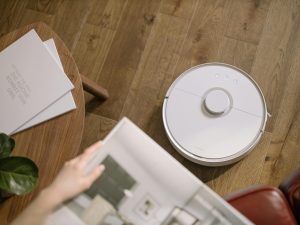Baby Boomers and Smart Homes: Ease of Use and Accessibility
The Baby Boomer generation, those born between 1946 and 1964, has always been at the forefront of innovation and technological advancements. As this generation ages, their needs and priorities are changing, leading to a growing interest in smart homes. With the rise of smart home technology, Baby Boomers are finding ease of use and accessibility in their homes like never before. In this article, we will explore the connection between Baby Boomers and smart homes, and how this technology is making their lives easier.
The Booming Interest in Smart Homes for Baby Boomers
Smart homes, also known as home automation or domotics, are equipped with advanced technologies and interconnected systems that allow for remote control and monitoring of devices, appliances, and systems within the home. These homes utilize sensors, internet connectivity, and artificial intelligence to make life more convenient and efficient for the residents. While the younger generation may have been the initial target market for smart homes, Baby Boomers are now showing a growing interest in this technology.
According to a 2018 report by AARP, 38% of adults aged 50 and above are interested in using smart home technology, with 57% of those aged 50-64 expressing interest. The trend is only expected to rise as the Baby Boomer generation ages and seeks to maintain independence and efficiency in their homes.
The Ease of Use for Baby Boomers in Smart Homes
As Baby Boomers enter their golden years, they may face physical and cognitive challenges that can make daily tasks more difficult. While traditional homes may require significant modifications to accommodate these needs, smart homes are seamlessly able to adapt and cater to their needs without major renovations. With the use of voice commands or simple touchscreens, Baby Boomers can control lighting, temperature, appliances, and more, allowing them to live independently and comfortably in their own homes.
Adaptable and Customizable Features
The beauty of smart home technology is its ability to be tailored to the needs of the user. For Baby Boomers, this means customizable features that cater to their specific needs and preferences. For example, a smart thermostat can learn the temperature preferences of the resident and adjust automatically, reducing the risk of falls due to incorrect thermostat settings. Smart lighting systems can also be set to turn on when motion is detected, providing adequate lighting for those with nighttime mobility issues.
Remote Monitoring and Safety Features
As Baby Boomers enter retirement and travel more frequently, smart home technology provides peace of mind with remote monitoring capabilities. With surveillance cameras and sensors connected to a smartphone app, Baby Boomers can monitor their homes and be alerted of any potential issues, such as a break-in or gas leak. This adds an additional layer of safety and security for those who may need extra assistance or care.
The Accessibility Factor in Smart Homes for Baby Boomers
In addition to the ease of use, smart homes also offer unparalleled accessibility for Baby Boomers. With the use of voice commands and automated systems, tasks that may have been challenging for them to accomplish in a traditional home become effortless and accessible in a smart home setting.
Voice-Activated Smart Assistants
Voice-activated smart assistants, such as Amazon Echo and Google Home, have become essential tools for many Baby Boomers. These devices allow them to control their smart home devices and perform tasks using simple voice commands, minimizing the need for manual interactions. From setting reminders and making calls to controlling the TV and playing music, these assistants make daily activities a breeze for Baby Boomers.
Smart Health Monitoring
Smart homes also offer advanced health monitoring capabilities, allowing Baby Boomers to manage their health at home with ease. With the use of wearable technology and smart sensors, vital signs and health data can be tracked and monitored in real-time, providing early detection of health issues and reducing the need for frequent doctor visits. This technology offers a sense of independence and control over their health for Baby Boomers.
In Conclusion
Smart homes are revolutionizing the way Baby Boomers live, providing ease of use and accessibility like never before. As this generation seeks to maintain their independence and quality of life, smart home technology offers a solution tailored to their needs. With its customizable and adaptable features, as well as advanced accessibility options, smart homes are proving to be an invaluable asset for Baby Boomers and their aging population.






